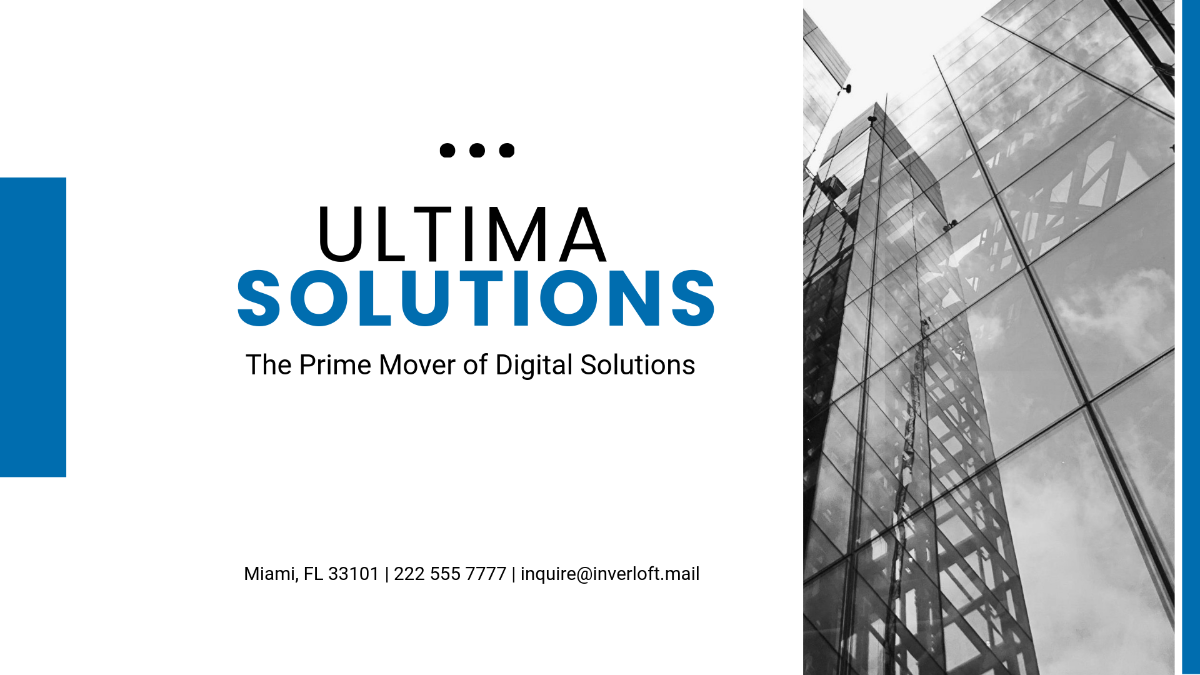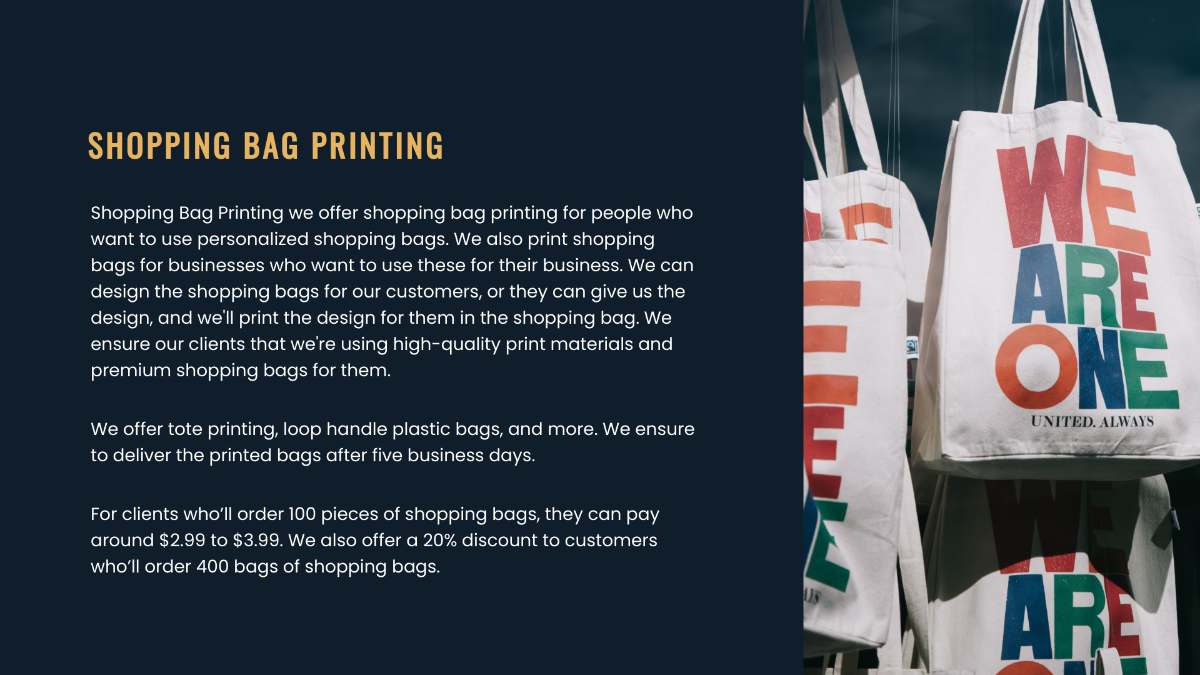Startup Investor Meeting Presentation Guide
Optimizing your investor presentation is not just about showcasing your business; it's about weaving a compelling narrative that resonates with potential investors, highlighting the unique value proposition of your startup. In the critical early stages of business development, securing funding can significantly influence your startup's trajectory, providing the necessary resources for growth, innovation, and market penetration. This comprehensive guide is designed to equip you with the insights and strategies needed to craft a persuasive investor presentation, ensuring you portray your startup in the most favorable light.
1. Introduction
Navigating through the startup phase is arguably one of the most daunting challenges entrepreneurs face. This period is fraught with uncertainties, from establishing a market presence to scaling operations and everything in between. However, one of the most pivotal hurdles during this phase is securing investment. Investors are inundated with opportunities, making it imperative that your pitch stands out. The essence of an effective presentation goes beyond mere facts and figures; it's about telling a story that captivates, convinces, and converts skepticism into enthusiasm.
The cornerstone of earning investor trust and confidence lies in your ability to articulate a clear, compelling vision of your business. This vision should not only demonstrate a deep understanding of the market landscape and the problem your startup aims to solve but also showcase the strategic roadmap you've laid out to achieve success. This guide is crafted to steer you through the intricacies of building an investor presentation that resonates. It will guide you through understanding your audience, structuring your content for maximum impact, and delivering your message with confidence and clarity.
2. Understanding Your Investors
Deep knowledge of your potential investors is critical. It's not just about who they are but understanding their 'why':
Investment Thesis: Each investor has a guiding set of principles or a thesis that drives their investment decisions. Understanding this can help you align your presentation with their goals, whether they're focused on disruptive technologies, social impact, or rapid scalability.
Risk Appetite: Gauge their tolerance for risk. Some investors might be drawn to early-stage startups with high growth potential, while others may prefer more established businesses with proven revenue models.
Success Stories: Research their portfolio to identify success stories and understand the common factors that contributed to these successes. This can offer insights into what the investor values in a business.
3. Building the Content
Your presentation content is your narrative. It's crucial to structure this narrative to not only convey information but to tell a compelling story.
The Problem:
Customer Pain Points: Dive deep into the customer's pain points. Use data, customer testimonials, or case studies to make the problem as tangible and relatable as possible.
Market Gap Analysis: Provide a clear analysis of the market gap. Show how current solutions are inadequate and where your startup fits in filling this gap effectively.
Your Solution:
Unique Value Proposition (UVP): Clearly articulate your UVP. What makes your solution not just different, but better? Use demos, prototypes, or success stories to bring your solution to life.
Technology and Innovation: If your solution is technology-based, explain the innovation without getting too technical. Focus on the benefits and the impact of your technology on solving the problem.
Market Potential
Market Size and Growth: Use reliable sources to back up your claims about the market size and growth potential. Be realistic but optimistic in showcasing the total addressable market (TAM) and your serviceable obtainable market (SOM).
Competitive Landscape: Provide a snapshot of the competitive landscape. Use tools like SWOT analysis or Porter's Five Forces to position your startup within the market context.
Business Model
Revenue Streams: Detail your revenue streams. Are you relying on direct sales, subscription models, freemium strategies, or a mix? Provide rationale and evidence for the chosen model's viability.
Customer Acquisition: Outline your customer acquisition strategies. How will you reach your target customers, and what channels will you use? Discuss the cost of customer acquisition (CAC) and the lifetime value (LTV) of your customers.
Growth Strategy
Scaling Plan: Discuss how you plan to scale your operations, technology, and team. Include timelines and milestones that investors can look forward to.
Market Expansion: If you're planning to enter new markets, explain the strategy and rationale behind these decisions. Highlight any pilot projects or market research that supports this strategy.
Team
Founding Team and Key Players: Go beyond introducing your team. Share stories that highlight their expertise, achievements, and the unique synergy within the team that makes your startup poised for success.
Advisory Board: If applicable, introduce your advisory board. Explain how their expertise and network add value to your startup.
Financials
Financial Projections: Present well-researched financial projections for the next 3-5 years. Include revenue, profits, and key financial ratios. Make sure your assumptions are realistic and justified.
Funding Utilization: Be specific about how you will use the funds. Break down the allocation towards product development, marketing, scaling operations, or entering new markets.
Crafting an investor presentation is an art and science. It requires a deep understanding of your business, market, and potential investors, coupled with the ability to tell a compelling story that not only demonstrates the viability of your startup but also ignites the imagination of your audience. Remember, investors invest in people as much as they do in ideas. Your presentation should reflect not only the potential of your business but also the passion, expertise, and vision of your team.
By meticulously preparing each section of your presentation and tailoring your narrative to resonate with your potential investors, you set the stage for a compelling dialogue about your startup's future. This guide is designed to be your companion in this journey, helping you to craft a presentation that informs, inspires, and invites action.
4. Step-by-Step Instruction
Crafting an investor presentation is akin to storytelling, where every element of your narrative should captivate and convey the essence and potential of your startup. This chapter breaks down the presentation into manageable sections, each designed to build upon the last, creating a cohesive and compelling narrative. From the initial hook to the detailed financial projections, this step-by-step guide ensures that each aspect of your business is presented with clarity and impact. Follow these structured instructions to create a presentation that resonates with potential investors and lays the foundation for a successful partnership.
Presentation Structure Table
Section | Key Focus | Details |
|---|---|---|
I. Open Powerfully | Hook | Begin with an engaging story, intriguing fact, or a striking visual that connects emotionally or intellectually with your audience, setting the tone for what's to come. |
II. Present the Problem | Identification | Clearly articulate the problem or need in the market that your startup addresses. Make it relatable and significant to ensure it resonates with your audience. |
III. Bring up Your Solution | Solution | Introduce your product or service as the ideal solution to the problem identified. Utilize visuals, demos, or prototypes to vividly illustrate how your solution works and its benefits. |
IV. Talk About the Market | Market Potential | Showcase the size and growth potential of your target market with data and research. Highlight the demand for your solution and the market opportunity it represents. |
V. Discuss Your Business Model | Revenue Strategy | Detail how your startup will generate revenue. Describe your pricing model, sales channels, and any unique aspects of your business model that will drive financial success. |
VI. Showcase Your Team | Team Strength | Introduce the core team members, emphasizing their relevant experience, skills, and the unique contributions they make to the startup. Highlight any advisors or partners who add value. |
VII. Present Your Financials | Financial Projections | Provide a clear overview of your financial projections, including expected revenue, profit margins, and major expenses. Specify the funding needed and how it will be used to achieve growth milestones. |
5. Troubleshooting and FAQs
Q: What if my startup does not have any financial history?
A: It's quite typical for early-stage startups to lack extensive financial history. However, investors are interested in understanding your startup's potential for future growth and profitability. To address this, focus on presenting a well-defined revenue model that outlines how your startup will generate income. This could include your pricing strategy, sales channels, and customer acquisition plans. Additionally, provide detailed financial forecasts that project revenues, expenses, and cash flow over the next 3-5 years. Use market research, comparable business models, and any pre-sales or pilot program data to support your projections. It's also helpful to discuss your assumptions and the strategies you'll employ to achieve these financial milestones, demonstrating a clear path to profitability.
Q: How long should the presentation be?
A: The ideal length of an investor presentation is typically between 15-20 minutes. This time frame allows you to cover all the essential aspects of your business without overwhelming your audience with too much information. A concise presentation also leaves room for a Q&A session, which is crucial for engaging with investors and addressing any specific concerns or interests they may have. When preparing your presentation, focus on clarity and brevity. Ensure each slide or section adds value and drives home your key messages. Remember, the goal is to spark interest and open a dialogue, not to cover every minute detail of your business.
Q: What if the investors seem uninterested during the presentation?
A: Keeping investors engaged throughout your presentation is crucial. If you notice signs of disinterest, such as lack of eye contact, distractions, or minimal engagement, it's important to tactfully re-capture their attention. One strategy is to ask direct questions to the audience to foster interaction and bring the focus back to your presentation. For example, you might ask for their opinions on a particular market trend or how they've approached similar challenges in their investments. Incorporating humor or interesting anecdotes related to your business can also lighten the mood and re-engage the audience. Additionally, ensure your presentation is dynamic; use visuals, demonstrations, or brief videos to break up the monotony and add a layer of interest. Remember, the aim is to make your presentation a two-way conversation rather than a monologue.
By addressing these common questions and concerns with thoughtful, detailed responses, you can better prepare for your investor presentation and increase your chances of a successful outcome.
6. Conclusion
To conclude, a well-structured, comprehensive investor presentation can significantly bolster your chances of securing investment. Keep these final tips in mind:
Ensure clarity and simplicity in communication.
Practice your delivery to convey confidence and conviction.
Use visuals effectively to enhance understanding.
Anticipate tough questions and prepare your answers.
Always conclude by asking for the investment.










